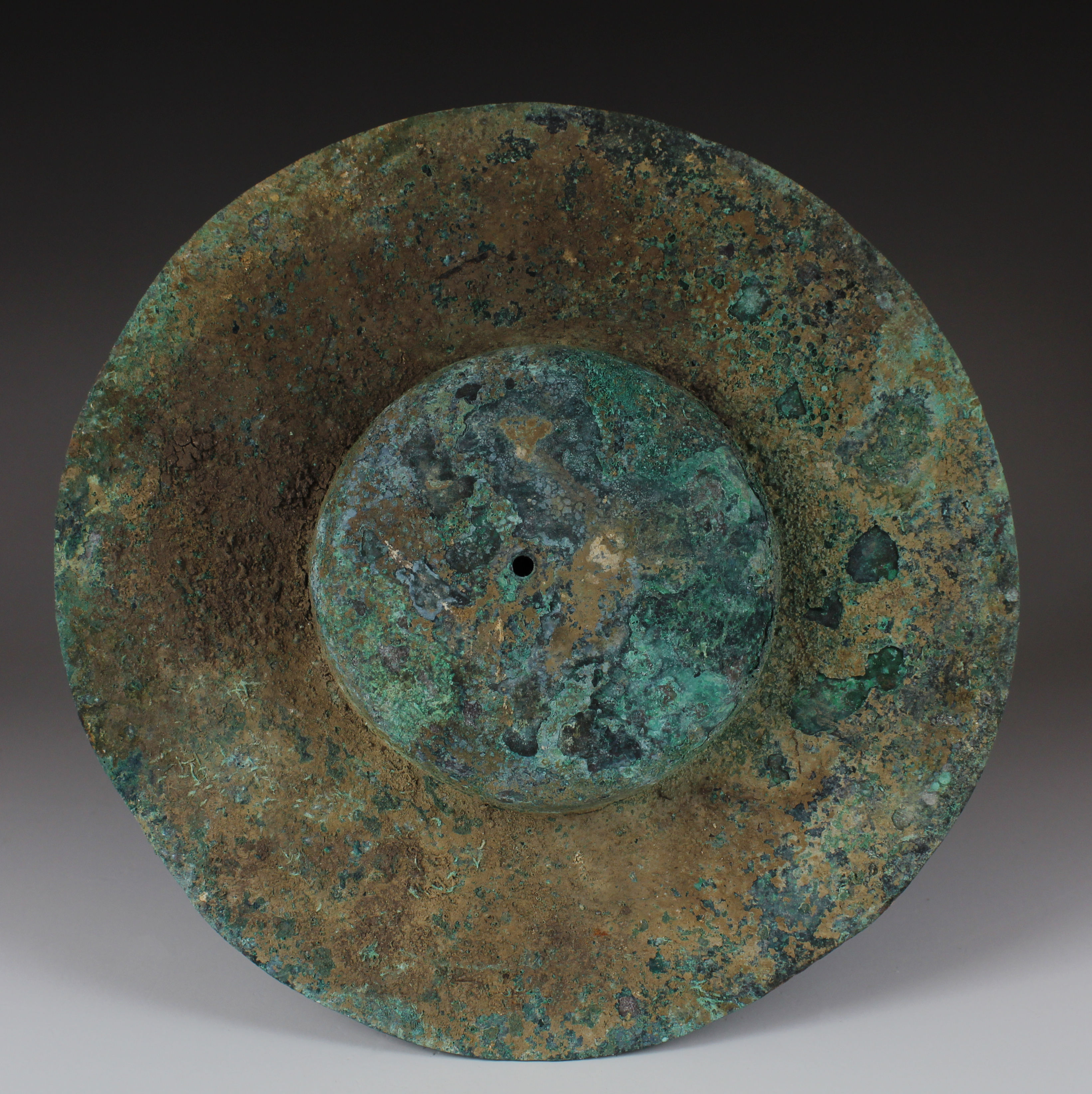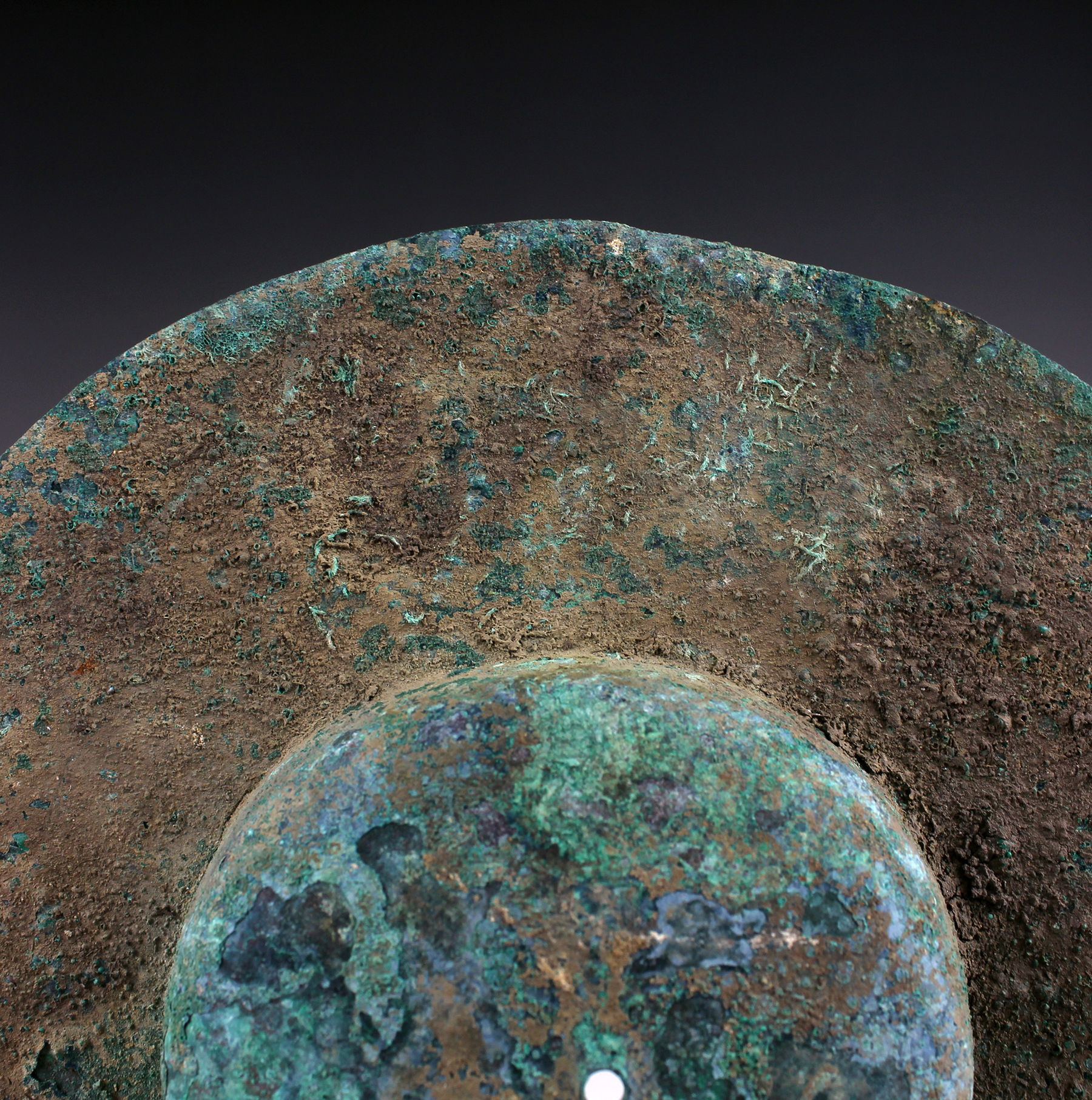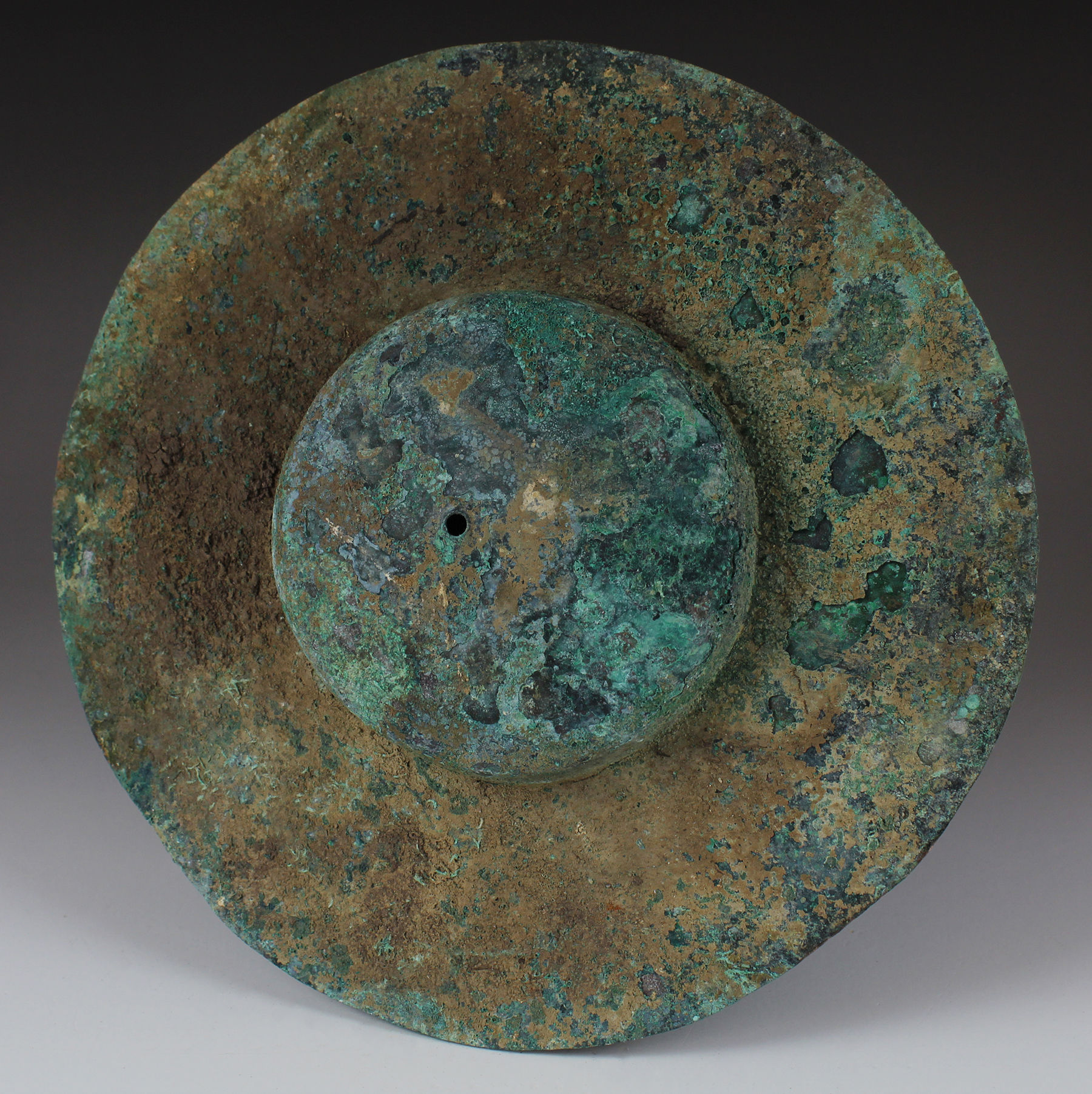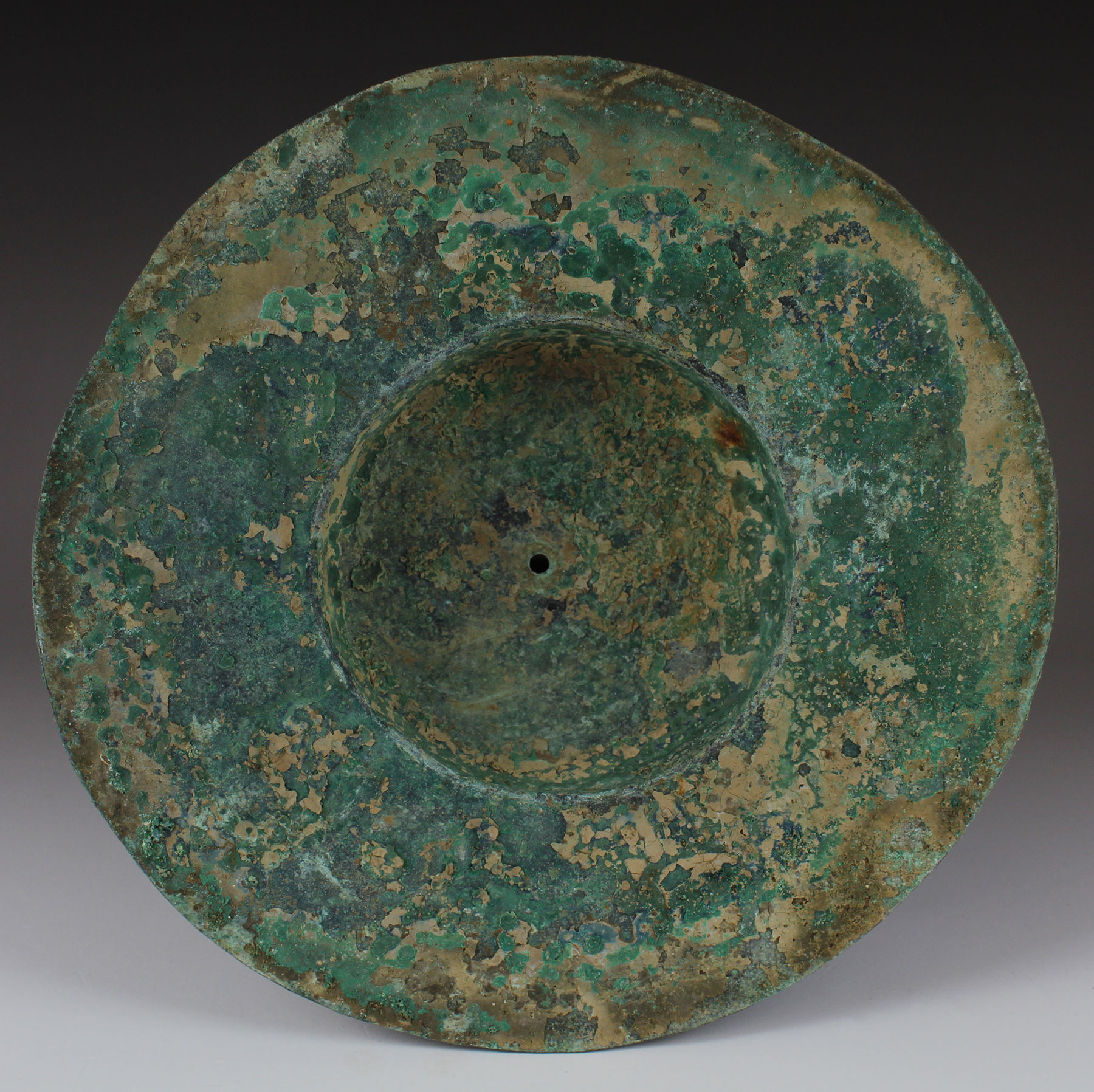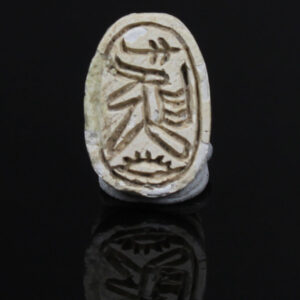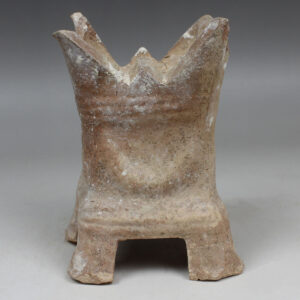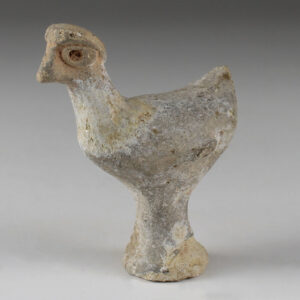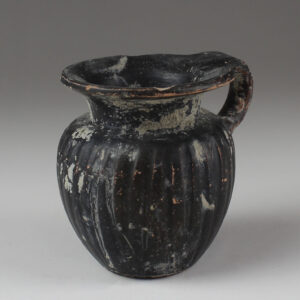Description
| ITEM | Umbo / Shield boss |
| MATERIAL | Bronze |
| CULTURE | Iron Age, Neo Assyrian |
| PERIOD | 1st Millenium B.C |
| DIMENSIONS | 20 mm x 170 mm |
| CONDITION | Good condition |
| LOCATION | Museum Exhibiton of the Arbeitsgruppe für Biblische Archäologie, Mainz (Germany) |
A shield boss, or umbo, is a round, convex or conical piece of material at the centre of a shield. Shield bosses (or sometimes, just “bosses”) are usually made of thick metal but could also be made of wood. The boss was originally designed to deflect blows from the centre of round shields, though they also provided a place to mount the shield’s grip. As time went on and heater shields with curved bodies became more popular, and enarmes superseded the bar grip, the boss became more of an ornamental piece.
Often, bosses are not present on non-circular shields due to the differences in technique; with a round shield, one makes a punching motion towards an oncoming blow, while with a heater or kite shield, attacks are blocked by pivoting the shield about the body. A boss provides a significant advantage for deflecting blows when using a punching motion, but is not very effective when using a pivot to block an attack.
The overall period is characterized by widespread use of bronze, though the place and time of the introduction and development of bronze technology were not universally synchronous. Human-made tin bronze technology requires set production techniques. Tin must be mined (mainly as the tin ore cassiterite) and smelted separately, then added to hot copper to make bronze alloy. The Bronze Age was a time of extensive use of metals and of developing trade networks
Western Asia and the Near East were the first regions to enter the Bronze Age, which began with the rise of the Mesopotamian civilization of Sumer in the mid 4th millennium BC. Cultures in the ancient Near East (often called one of “the cradles of civilization”) practiced intensive year-round agriculture, developed writing systems, invented the potter’s wheel, created centralized governments (usually in form of hereditary monarchies), written law codes, city-states and nation-states and empires, embarked on advanced architectural projects, introduced social stratification, economic and civil administration, slavery, and practiced organized warfare, medicine and religion. Societies in the region laid the foundations for astronomy, mathematics and astrology.


